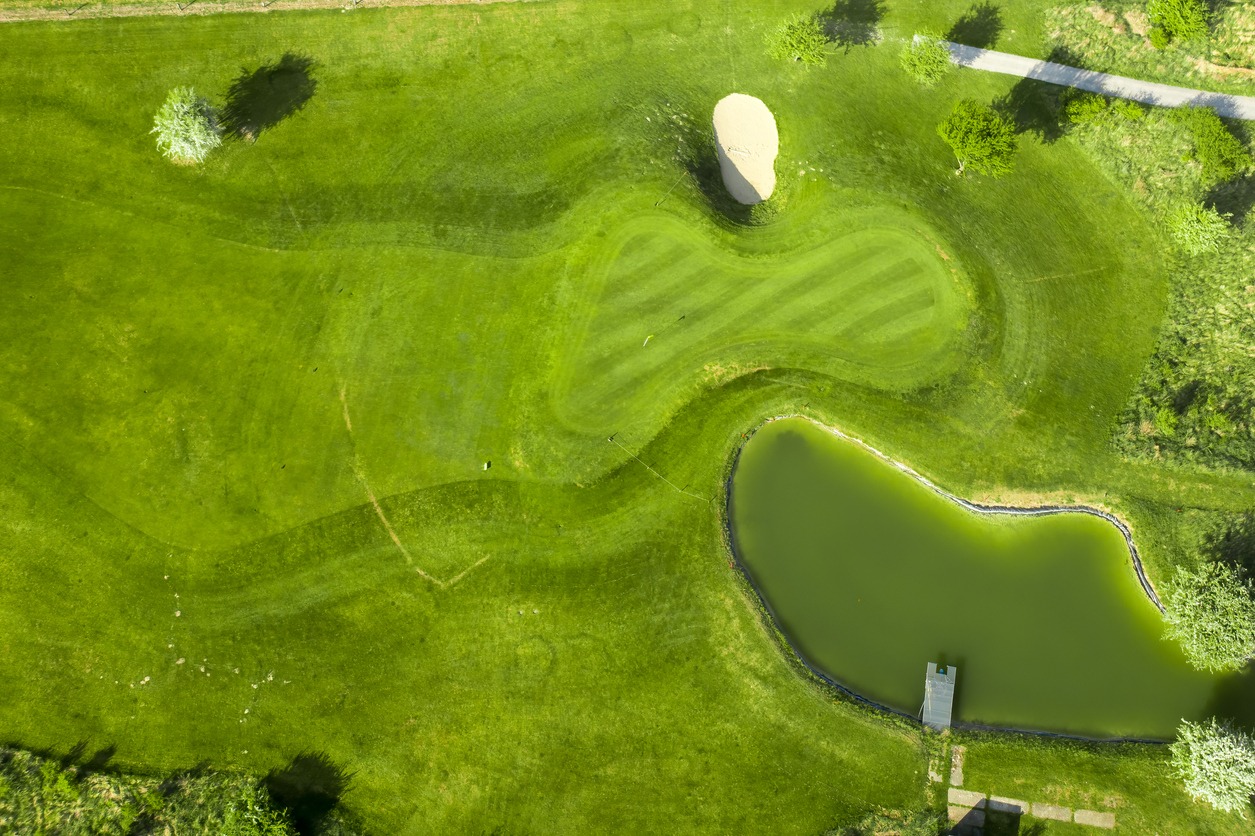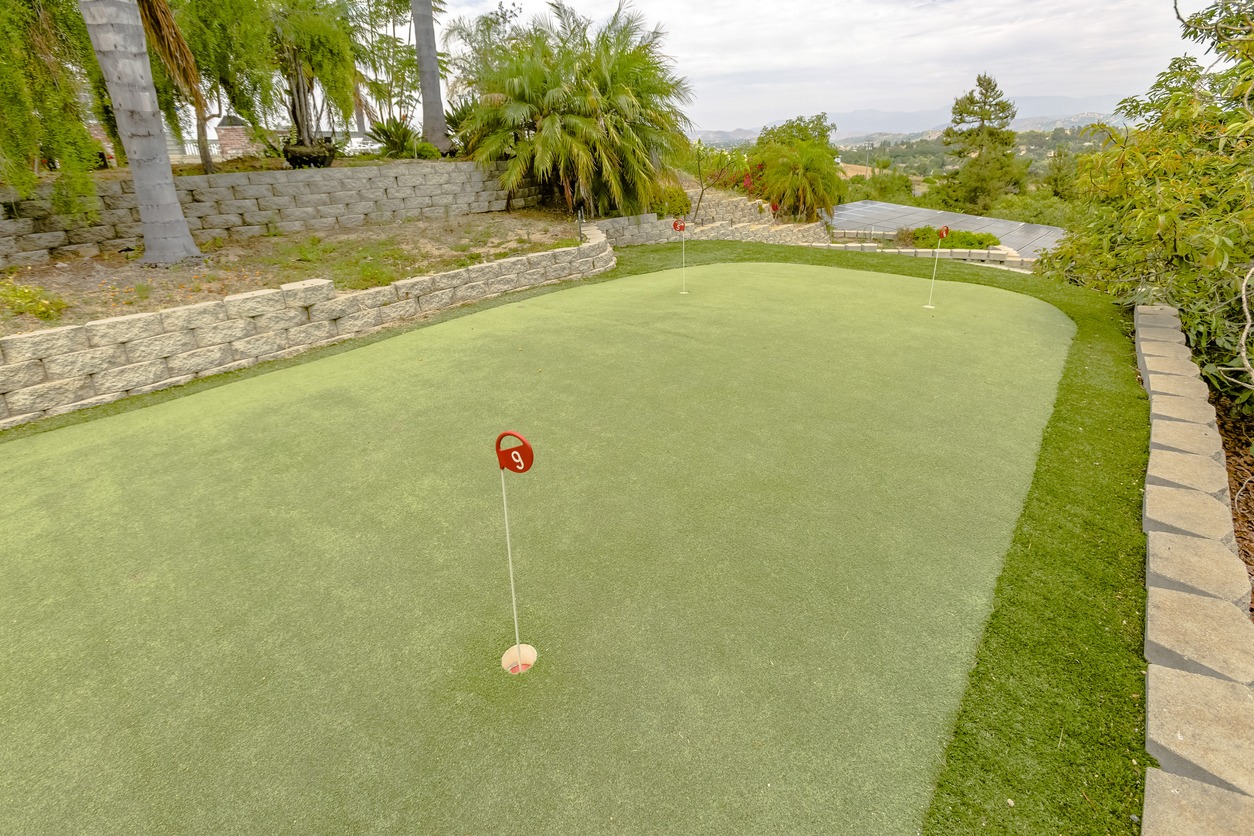Golf is a world-renowned sport, originated in 1800’s in Scotland. Today, it is usually associated with elites in the society played in wide acres of green landscape.
Due to the desire to provide a more accessible and compact version of traditional golf, its appeal has expanded to include enthusiasts from diverse backgrounds. This, in turn, provides avenue to flourish into the evolution of mini golf.
Mini golf involves navigating a series of creatively designed miniature courses, each presenting unique obstacles and challenges. It has become a source of fun and entertainment for people of all ages. With the advent of time, mini golf has experienced a resurgence in popularity, with modern courses featuring innovative technology, interactive elements, and competitive twists.
So, what could be the distinctive character between the regular golf and mini golf? Do they share commonalities? In this article, we will consider the difference between regular golf and its miniature counterpart, mini golf.
Overview of Regular Golf and Mini Golf
Regular Golf and Mini Golf are two enjoyable sports with distinct characteristics. Regular Golf, often simply called “golf,” involves players using various clubs to hit balls into a series of holes on a course in as few strokes as possible. It is played on diverse terrains, and each hole presents unique challenges. Courses can have 18 or 9 holes, and the sport is played for the lowest number of strokes.
On the other hand, Mini Golf, also known as “miniature golf,” “putt-putt,” or “crazy golf,” focuses solely on putting. Players navigate through creative courses with artificial putting surfaces, featuring imaginative layouts, obstacles like tunnels and ramps, and even moving elements. The aim is to achieve the lowest score possible.
Regular Golf’s origins date back to 15th century Scotland, while Mini Golf emerged in the 20th century as a recreational and family-friendly version of the game. Regular Golf has prestigious tournaments like The Open Championship, The Masters, the U.S. Open, and the PGA Championship, while Mini Golf offers a relaxed and fun atmosphere for players of all ages.
Distinctive Features of Regular Golf versus Mini Golf:
While there are certain similarities between real golf courses and mini-golf courses, distinct differences exist that distinguish them from each other. Here, we’ll deal on some of the key contrasts:
1. Course Size
When it comes to the size of the playing area, regular golf and mini golf showcase distinct contrasts.
Regular Golf Course Size:
Regular golf courses can vary significantly in size, ranging from smaller country clubs to expansive world-renowned resorts. These courses can span over 200 acres for resort courses and around 170 acres for urban ones. Due to their extensive dimensions, players often need to use golf buggies for navigation. Maintaining such large courses also poses substantial logistical challenges.
Mini Golf Course Size:
In contrast, mini golf courses are more compact. While they can also differ in size, they generally occupy smaller areas. The largest mini golf courses might stretch over a few acres, while some successful mini-golf setups thrive within just 2,500 square feet. This condensed nature allows for numerous indoor mini-golf courses, offering fun and entertainment in tighter spaces.
2. Time in Playing
Another difference is the time spent on the green, regular golf and mini golf offer distinct playing experiences.
Regular Golf Playing Time:
Regular golf games typically require a more substantial time commitment. Completing a round of traditional golf on an 18-hole course takes about 3 to 4 hours. This longer duration is due to the larger size of regular golf courses and the distance between holes.
Mini Golf Playing Time:
In contrast, mini golf offers a quicker and more compact gaming experience. A round of mini golf, played on creatively designed miniaturized courses, usually lasts for about 30 to 45 minutes. The condensed layout of mini golf courses contributes to this shorter playing time.
3. Type of Obstacles
Obstacles set the tone for mini golf and traditional golf in distinct ways.
Obstacles in Regular Golf:
For traditional golf, the obstacles are often natural elements like geography and wind. The flagpole also poses a challenge. Lakes, bunkers, bushes, and trees are man-made obstacles, termed as hazards, which add complexity to the game.
Obstacles in Mini Golf:
Mini golf courses, in contrast, use artistic decorations as obstacles. These themed designs include waterfalls, volcanoes, jungles, and windmills. Mini golf courses discard natural hindrances, focusing on visual allure. Decorative elements like gators, loop de loops, and windmills create engaging challenges.
4. Materials Used
In the realm of golf, the materials you use can significantly differ between regular golf and mini golf.
Mini Golf Equipment:
Mini golf prides itself on simplicity, requiring minimal gear. To begin a game, you’ll need:
- Putter: Designed for shorter distances, suitable for children too.
- Ball
- Scoring pad
- Regular Golf Equipment:
In contrast, traditional golf demands more equipment, including:
- A set of golf clubs (up to 14 clubs)
- Golf cart
- Balls
- Scoring pad
Variation in Clubs:
For mini golf, a single putter suffices due to the compact courses and focus on putting. In regular golf, players typically carry 10 – 12 specialized clubs for different shots.
Balls and Accessories:
Regular golfers usually bring multiple balls due to the potential for loss during the game. Mini golf, being less expansive, rarely encounters such ball loss.
5. Gear
Considering the gear you wear while playing, regular golf and mini golf show distinct approaches.
Gears in Regular Golf:
Traditional golf often adheres to a specific dress code. Men typically wear collared polos or button-down shirts, along with khakis or slacks. Women’s attire includes collared shirts, knee-length dresses, or formal pants. Proper golf shoes with spikes are also common.
Gears in Mini Golf:
Mini golf takes a more relaxed stance on attire. There’s no strict dress code, allowing for a range of clothing options. From denim and polos to jumpers, sweatpants, and jackets, you have more freedom in your choice. Comfort and ease of movement are encouraged, ensuring you can swing and putt with comfort.
Similarities Between Mini Golf and Regular Golf:
Mini golf and regular golf may seem quite different at first glance, but they share several similarities that make them enjoyable and engaging activities for people of all ages. Let’s explore the commonalities that tie these two sports together:
1. Getting the Ball in the Hole
Both mini golf and regular golf focus on the main goal of getting the ball into a hole using as few swings as possible. Even though mini golf adds creative challenges, the main idea remains unchanged.
2. Navigating the Course
Both mini golf and regular golf have a series of holes that players go through. No matter the size of the course, aiming for the hole is something they both share.
3. Swinging the Clubs to Sink the Ball
Both mini golf and regular golf involve using special clubs to hit the ball and try to get it into a hole. The person who finishes with the fewest strokes is the winner.
4. Steering Clear of Trouble
In both games, players aim to prevent the ball from landing in water or going too far out of bounds. Both real golf courses and mini-golf courses also have sandy areas that can make things tricky.
5. Counting Your Strokes
In both sports, players keep score by counting how many swings it takes to finish each hole. Having a lower score means you’re doing better and improving your skills.
6. Using Your Skills
Both mini golf and regular golf need you to swing the club with precision, control, and coordination. Whether you’re gently putting in mini golf or making a strong drive in regular golf, your physical skills matter.
7. Having Fun and Relaxing
Mini golf and regular golf are about having a good time and relaxing. People of any age can play to unwind, enjoy themselves, and spend time with friends and family.
Conclusion
Mini golf and regular golf, while distinct in their approaches, share a common thread of enjoyment and skill-building. Both sports offer opportunities for fun, relaxation, and friendly competition. Mini golf provides a casual entry point for newcomers and a delightful family activity, while regular golf demands precision and technique, appealing to those seeking a more traditional sporting experience.
Whichever you choose, both mini golf and regular golf contribute to the wide array of leisure activities, appealing to various players and their individual tastes. Whether you’re aiming for a hole-in-one through a colorful obstacle or taking a swing on an expansive course, the joy of the game is what truly matters.




